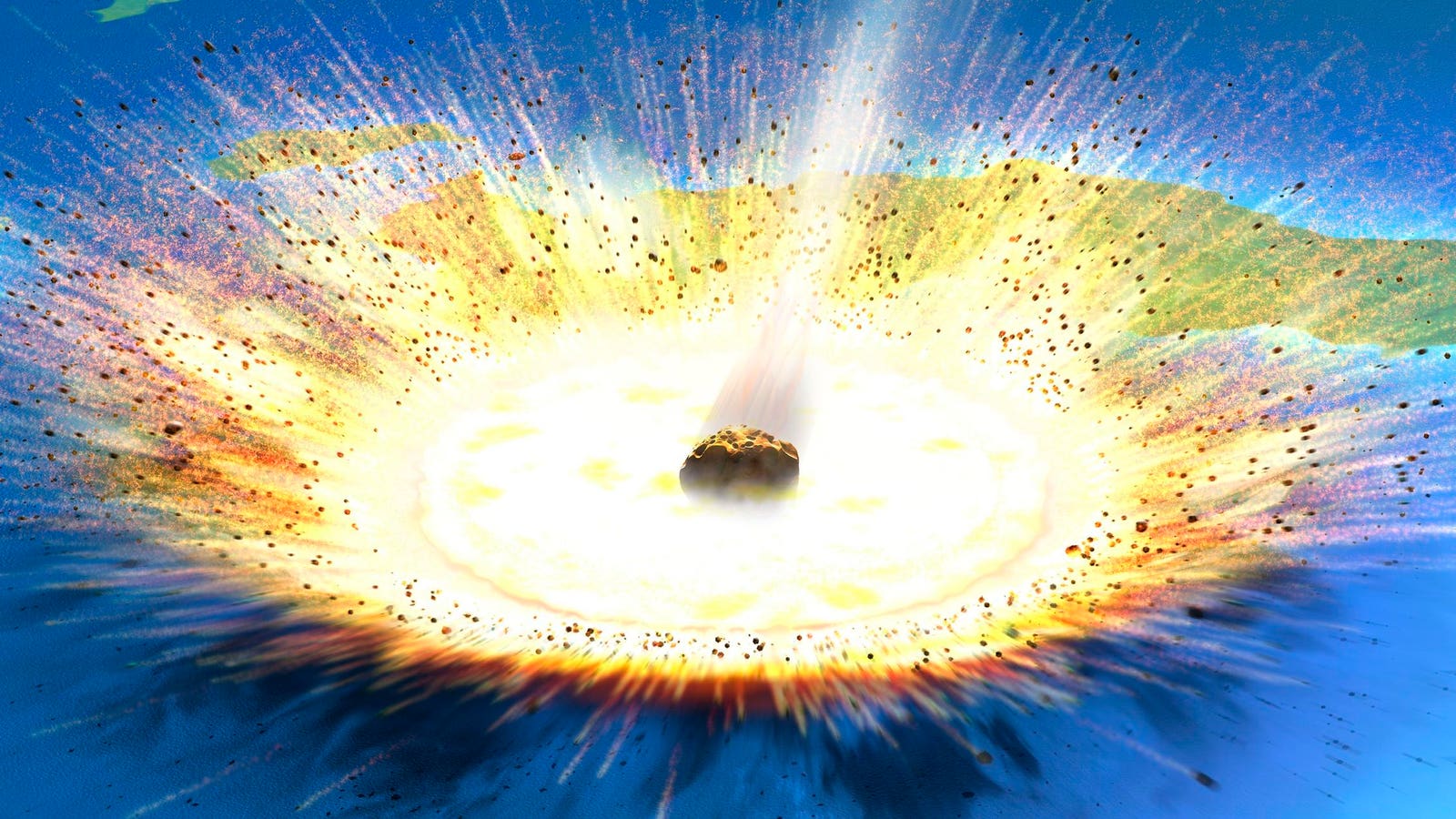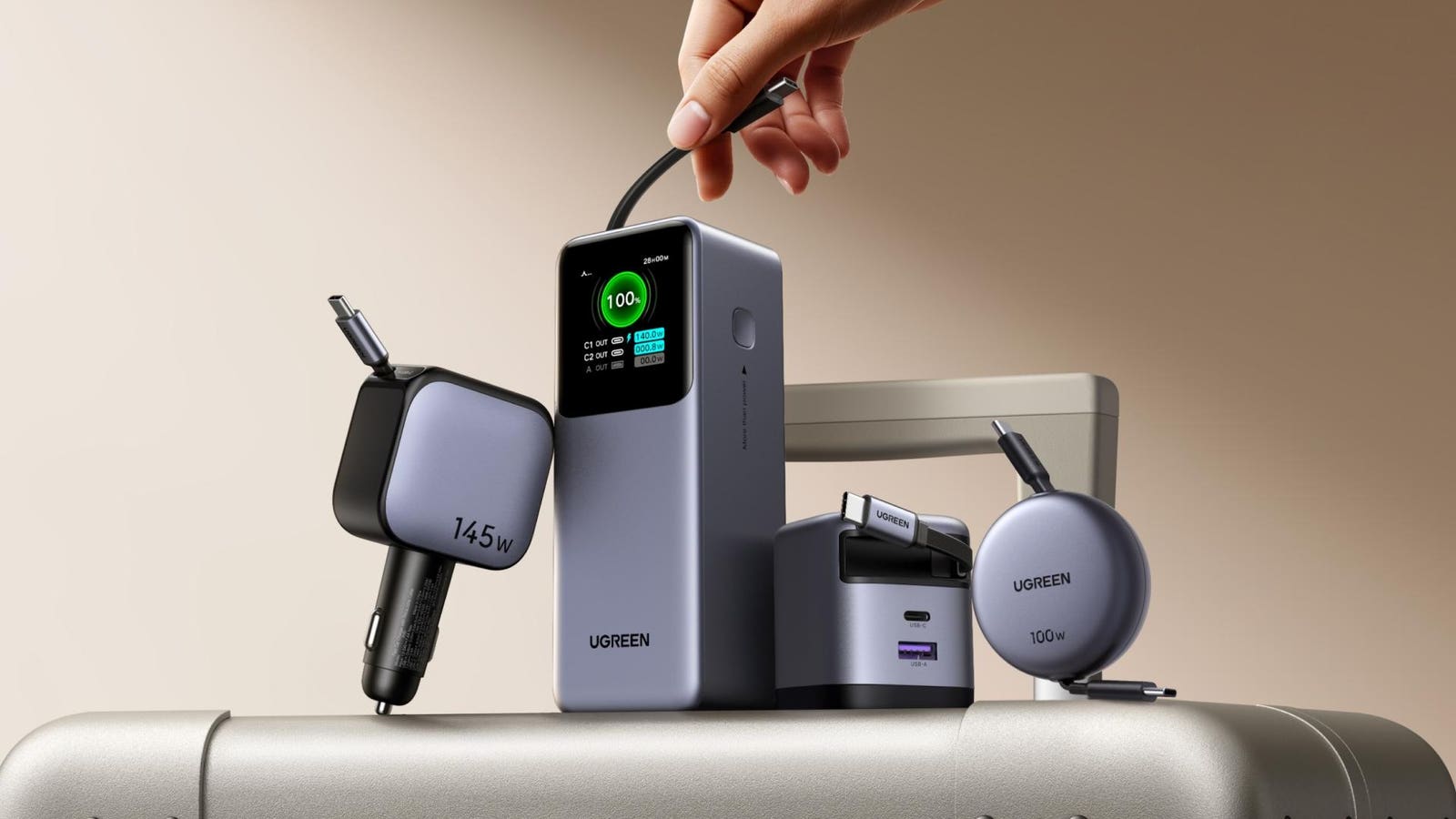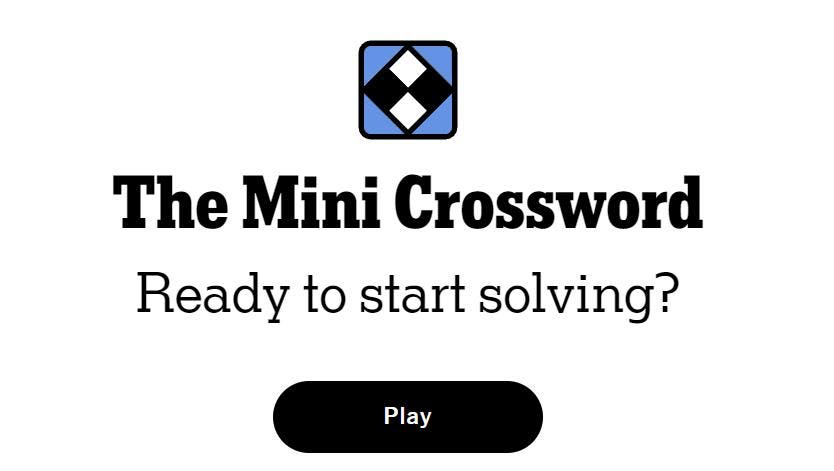Artist’s impression of a large asteroid colliding with Earth on the Yucatan Peninsula in Mexico.
At the Cretaceous-Paleogene transition 66 million years ago, an asteroid about 10 kilometers in diameter struck a shallow sea in what is today Southeast Mexico. The impact formed the Chicxulub crater, which is around 200 kilometers wide and one kilometer deep. The impact would have thrown trillions of tons of dust into the atmosphere, blocking the sunlight and cooling the Earth’s climate significantly. Entire ecosystems collapsed and the impact caused the extinction of 75 percent of all species, including all non-avian dinosaurs.
At the impact site every life form was virtually wiped out, but just 30,000 years later marine life flourished thanks to a hydrothermal system created by the asteroid’s force shattering the seafloor.
In 2016, an international team of researchers retrieved over 829 meters of cores from within the crater. A new study based on chemical traces and microfossils found in the cores presents evidence that marine life returned to the site of the crater less than a decade after the impact. This rapid recovery was likely helped by a hydrothermal system created by the asteroid impact and a steady supply of nutrients in the crater environment.
“After the asteroid impact, the Gulf of Mexico records an ecological recovery process that is quite different from that of the global ocean, as continuous hydrothermal activity has created a unique marine environment,” says study lead author Honami Sato, an assistant professor at Japan’s Kyushu University.
The study hinges on a chemical element called osmium, a metallic element common in asteroids. The researchers found evidence that osmium from the remains of the asteroid buried kilometers beneath the impact crater was continuously released in the Gulf of Mexico as hot water moved beneath the shattered seafloor and up toward the surface.
The researchers analyzed the chemical composition of sediments covering the crater to determine the extent of the hydrothermal system and how long the enrichment of osmium lasted. Microfossils preserved in the same sediments allowed the scientists to reconstruct how species diversity changed after the impact.
A section of rock core pulled from the Chicxulub crater. Researchers found high concentrations of … More
The results show that as the hydrothermal system ceased releasing osmium from the asteroid, the types of marine life living at the crater site changed.
When the hydrothermal system was releasing osmium, the dominant plankton were species living in high-nutrient environments. When the osmium returned to pre-impact levels, the plankton changed to species adapted to low-nutrient environments.
This finding indicates that the ecosystem was no longer being sustained by the nutrients from the hydrothermal system being released into the overlying ocean. Likely the system was buried too deep by sediments accumulating over time in the basin formed by the impact.
“This study reveals that impact cratering events, while primarily destructive, can in some cases also lead to significant hydrothermal activity,” concludes coauthor Steven Goderis, a research professor at the Vrije Universiteit Brussel, Belgium. “In the case of Chicxulub, this process played a vital role in the rapid recovery of marine ecosystems.”
The study,”Prolonged 187Os/188Os excursion implies hydrothermal influence after the Chicxulub impact in the Gulf of Mexico,” was published in the journal Nature Communications.
Additional material and interviews provided by the University of Texas at Austin.








